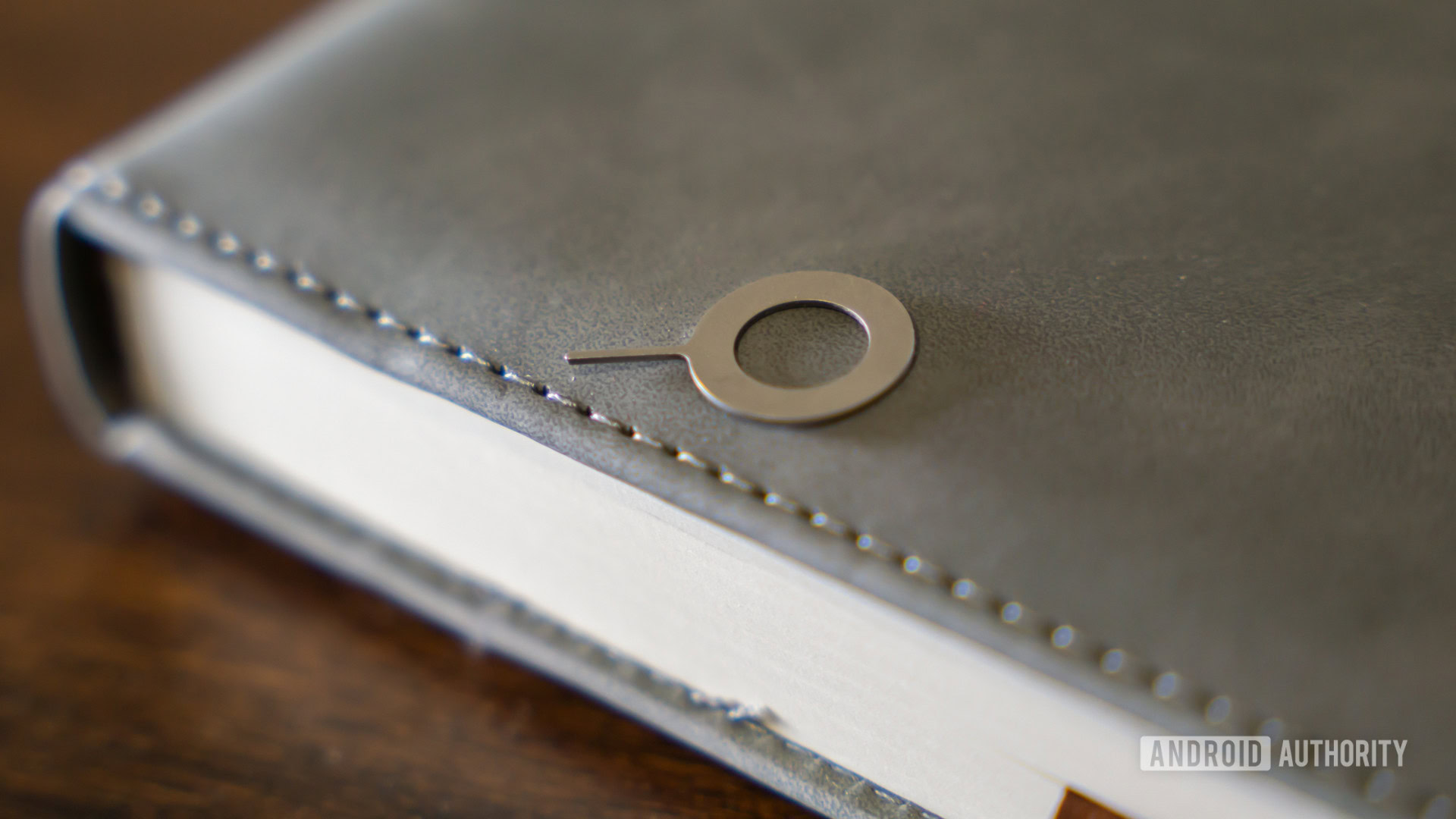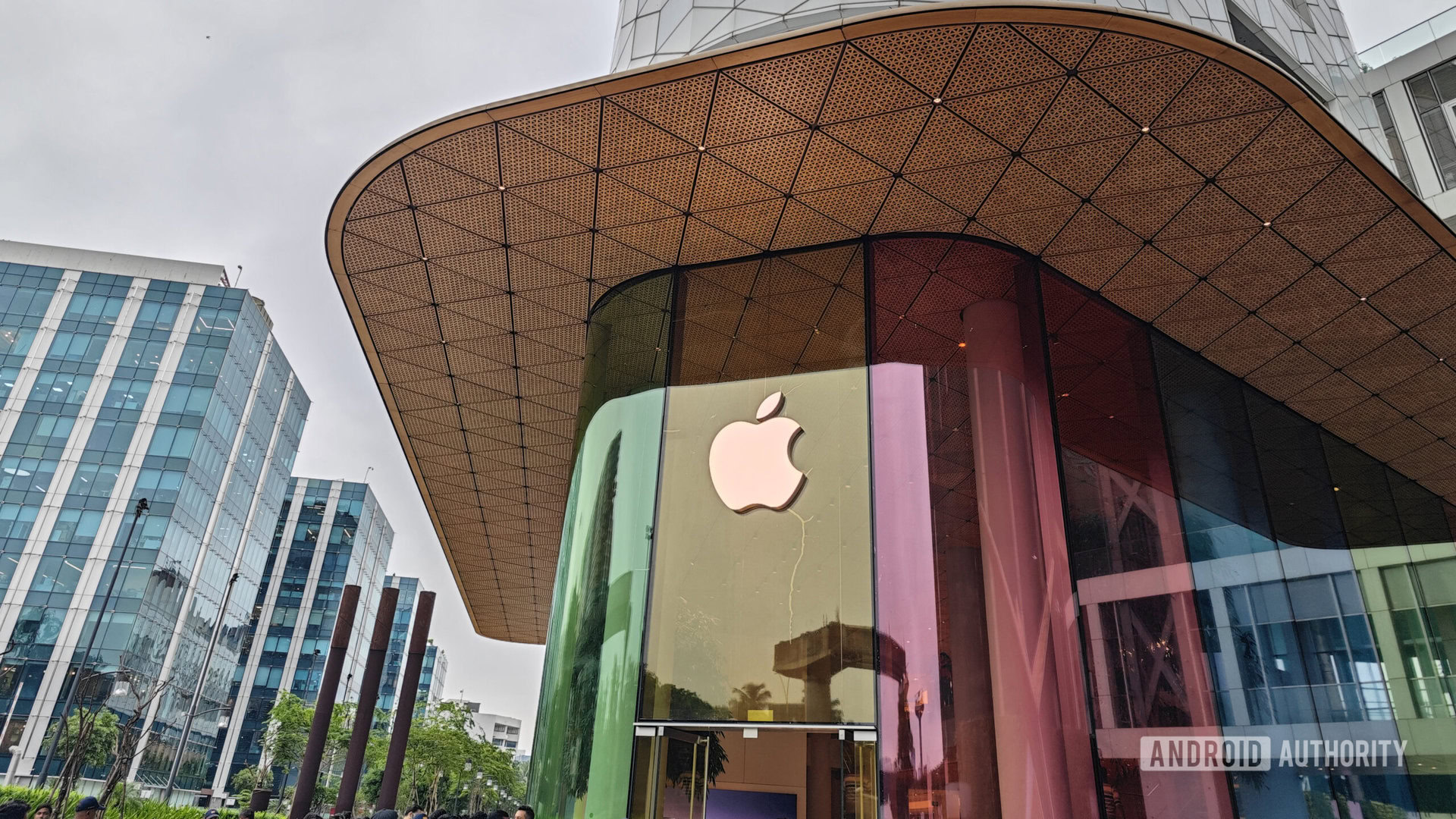Affiliate links on Android Authority may earn us a commission. Learn more.
What to do if your iPhone says there's "no SIM"
Published onDecember 12, 2024
Setting up and activating a new iPhone is usually a very smooth and straightforward process. But occasionally, there can be an odd hiccup here and there, especially when your iPhone says there’s no SIM card inserted. If you get this message and your iPhone actually does have a SIM card, use the following troubleshooting tips to narrow and nail down your problem.
QUICK ANSWER
If your iPhone says there's no SIM or that the SIM is invalid, it can mean that the SIM hasn't been inserted, it hasn't been appropriately inserted, the SIM is damaged, your carrier account may have an issue, or the iPhone itself may have a problem. Almost all of these issues can be fixed, however. We'll go over all the possible solutions in this guide.
JUMP TO KEY SECTIONS
Note: Keep in mind many newer iPhones don’t even have a SIM card slot. The iPhone 14, iPhone 15, and iPhone 16 series handsets in the US have entirely switched to eSIM. If you have one of these phones, you can learn more about eSIM technology here.
How to fix the “No SIM” error on iPhones
Let’s now look at each possibility, and how to check it and fix it.
How to restart an iPhone
The good ol’ restart seems to fix most tech issues, and the same applies to the “No SIM” issue you’re trying to fix. Simply rebooting the phone may get things working. It’s an easy fix you should try before moving to more complex solutions.
- Simultaneously press and hold the side button, and either the volume down or volume up buttons.
- The power menu screen will show up. Use the slide to power off slider to turn off the phone.
- When the phone shuts down, press and hold the side button until you see the Apple logo.
Open the SIM card tray and check the SIM
If you have already inserted a SIM card and the phone screen says ‘No SIM,’ the first thing to check is whether the SIM card is inserted properly into the SIM tray. A micro-SIM is very fidgety to handle, so it may not be sitting snugly in the tray.
- Get a SIM card ejector tool. One usually comes with the phone. If you don’t have one, you can use anything pointy, such as a paperclip.
- Locate the SIM card tray on one of the phone’s sides. Stick the end of the SIM ejector or paperclip into the tiny hole.
- Give it a very slight but firm nudge to pop the SIM tray out.
- Make sure the SIM card is in the tray properly.

Compare the shape of the SIM card to the shape of the tray and adjust accordingly. Make sure it is snug, with the gold-colored side face up.
Make sure the SIM card isn’t damaged
While you have the SIM card out of the tray, thoroughly examine it to ensure it isn’t damaged. If it has any scratches, scuffs, or if the gold side has beendamaged in any way, then that will obviously cause the SIM card to malfunction. This is especially common when people try to cut up larger SIM cards to turn them into nanoSIM cards. If this is the issue, you will have to buy or request a new SIM card from the phone carrier.
Update your iPhone
Assuming you can’t find anything outwardly wrong with the SIM card, and it seems to be fitted in the phone properly, the next step is to check that your iPhone’s software is up-to-date. These updates usually come with software improvements and bug fixes, which may be the issue you’re having.
- Launch the Settings app.
- Go into General.
- Select Software Update.
- The iPhone will automatically check for updates. If one is available, follow the instructions to complete the process. You will usually need to select Update Now.
You should also check for any possible carrier settings updates:
- Open the Settings app.
- Go into General.
- Hit About.
- If a carrier settings update is available, you’ll see a prompt. Select OK or Update.
Check with your phone carrier
If the SIM card isn’t damaged, and the phone has all available updates installed, then the next step is to contact the phone carrier. This is also your best bet if you’re having any eSIM issues. The carrier may not have activated the SIM card yet, or your account may have been deactivated due to a specific issue that needs to be addressed.
A quick call, navigating their phone menu that doesn’t understand your accent, accidentally choosing Spanish instead of English, starting again, holding one the line to Beethoven’s ‘Ode to Joy’ for an hour should clear any outstanding matters.
At worst, the carrier will need to either activate your current SIM card or ship you a new one.
Contact Apple Support

If all the above options have been tried without success, then you likely have a defective iPhone. In this scenario, the only course of action is to contact Apple Support and arrange for the phone to be sent back for repair or replacement.
Alternatively, you could just waltz into any Apple Store and ask for help. Find your closest Apple Store here.
Why does my iPhone say “No SIM”?
There are multiple possibilities as to why your iPhone is throwing up a “No SIM” message. By a logical process of elimination, you can usually quickly identify the issue and fix it.
In short, you’re most likely looking at one of the following:
- A hardware problem: The SIM card could be damaged, or the iPhone itself could be defective.
- A software problem: iOS may be getting buddy, or may need an important update.
- A settings problem: An iPhone setting could be misconfigured.
- A carrier problem: Your account with your phone carrier could have an issue, which means your SIM would be deactivated.
FAQs
It means your iPhone is unlocked, and you can use any SIM card from any carrier.
Yes, you can activate your iPhone without a SIM card, but it must be unlocked first, and it must be running iOS 12 and above. If so, you can dismiss the ‘No SIM Card’ message during the iPhone activation process.
Yes, you can use an activated iPhone without a SIM card. You just won’t be able to call or text anyone. Everything else will work on wi-fi. It will technically be like having an iPod Touch.
The first iPhone to support eSIM was the iPhone XS. All iPhones since then can take advantage of this technology. Here’s our guide on activating an eSIM on iPhone.
If you have a US version of the iPhone 14, there is no physical SIM card slot. If you got your iPhone 14 from another country, the SIM card slot will be on the left side of the device, under the volume buttons.
If you have a US version of the iPhone 15, there is no physical SIM card slot. If you got your iPhone 15 from another country, the SIM card slot will be on the left side of the device, under the volume buttons.
If you have a US version of the iPhone 16, there is no physical SIM card slot. If you got your iPhone 16 from another country, the SIM card slot will be on the left side of the device, towards the bottom.
When your iPhone says there is a SIM failure, it means the phone can’t recognize the physical SIM card. This is more often a hardware issue.
A ‘SIM locked’ message tells you the SIM card, itself, is locked. More specifically, it means you likely locked it with a SIM PIN. If this were a matter of your phone being SIM locked, it would say, ‘SIM not supported.’